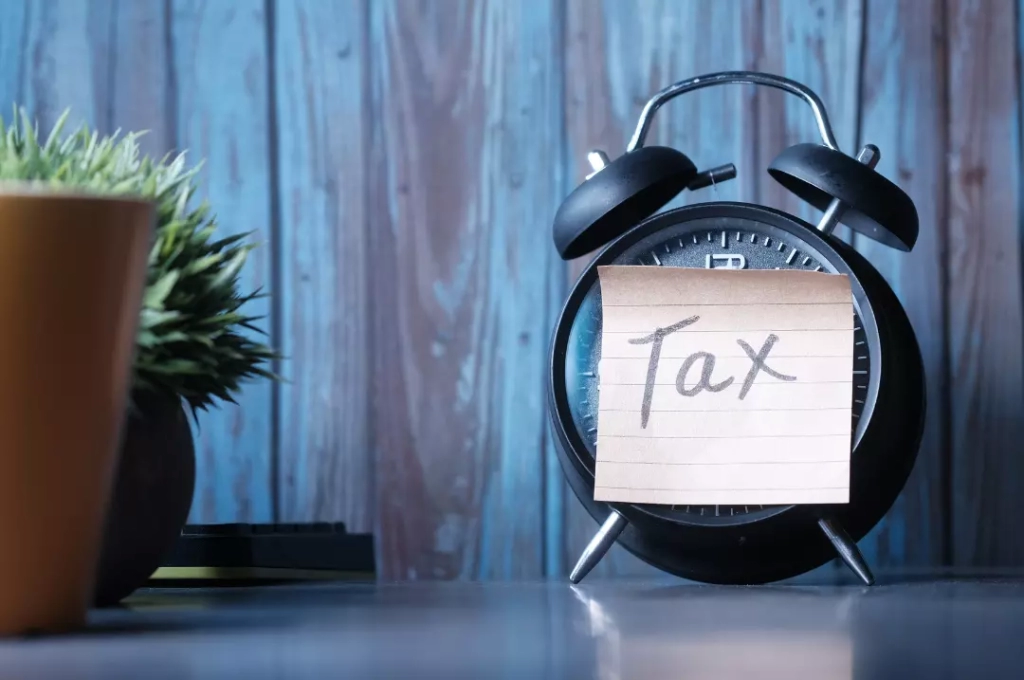How to reduce capital gains tax when selling a property?
Table of Contents
ToggleAre you planning to sell a property in Australia? If so, it’s essential to be aware of capital gains tax (CGT) and how it can impact your financial outcome.
Capital gains tax is a tax imposed on the profits you make from selling an asset, such as real estate. When you sell a property for more than you initially paid for it, the gain is subject to taxation. However, there are ways to minimise the amount of CGT you owe, ultimately putting more money in your pocket.
In this blog post, we’ll explore strategies to help you reduce CGT when selling a property in Australia. Whether you’re a property investor or a homeowner looking to maximise your profits, understanding these strategies can make a significant difference in your tax liability.
How to reduce capital gains tax when selling a property?
When it comes to selling a property in Australia, capital gains tax (CGT) is an important consideration. Fortunately, there are several strategies you can employ to minimise your CGT liability and maximise your profits. Let’s explore these strategies in detail:
Calculate your capital gains tax liability
Before diving into the strategies, it’s crucial to understand how CGT is calculated. CGT is calculated based on the difference between the sale price of the property and its original purchase price, adjusted for any allowable costs, such as legal fees or renovations. The resulting gain is then taxed at your marginal tax rate.
Utilise the CGT discount
One effective way to reduce your CGT liability is by utilising the CGT discount, which is available for investment properties. If you’ve owned the property for at least 12 months, you may be eligible for a discount of up to 50% on the capital gain. This means that only half of the capital gain will be subject to tax.
Consider holding the property for longer
Another strategy to reduce CGT is to hold onto the property for a longer period before selling. The longer you hold the property, the more you can potentially reduce your CGT liability. This is because the CGT discount increases from 0% to a maximum of 50% based on the duration of property ownership.
Utilise the 6-year rule
The 6-year rule is a valuable strategy for reducing CGT liability on your main residence. If you convert your main residence into a rental property, you can treat it as your main residence for CGT purposes for up to six years after moving out. This means you can potentially eliminate or reduce the CGT payable when you sell the property.
Offset capital gains with capital losses
If you have incurred capital losses from other investments, you can offset them against your capital gains to reduce your overall CGT liability. Capital losses can be carried forward indefinitely and applied to future capital gains. However, it’s important to note that there are specific rules and limitations when it comes to offsetting capital gains with losses, so consulting a tax professional is recommended.
Make use of tax-effective structures
Consider utilising tax-effective structures such as trusts or self-managed superannuation funds (SMSFs) to reduce your CGT liability. These structures offer unique advantages, such as potential tax concessions or lower tax rates, which can help minimise your overall tax liability when selling a property. However, setting up and managing these structures require careful consideration and expert advice.
By implementing these strategies, you can significantly reduce your CGT liability and retain more of the profits from selling your property. However, keep in mind that tax laws are complex, and individual circumstances may vary. It’s essential to consult with a qualified tax professional who can provide personalised advice based on your specific situation.

Can you avoid capital gains tax in Australia?
When it comes to CGT, it’s important to understand that completely avoiding CGT is generally not possible. CGT is a tax imposed on the profits made from selling certain assets, including property. However, there are limited circumstances where CGT may be minimised or exemptions may apply.
The nature of CGT
Capital gains tax is an integral part of Australia’s tax system. It is designed to ensure that individuals and entities pay tax on the profits they make when selling assets. While CGT cannot be completely avoided, there are legitimate strategies and exemptions available that can help reduce its impact.
Common misconceptions
There are common misconceptions surrounding the complete avoidance of CGT. Some individuals may believe that by transferring ownership to a family member or gifting the property, CGT can be avoided. However, such transfers are generally still subject to CGT, and specific rules and exemptions apply.
Limited circumstances for CGT avoidance
While complete avoidance of CGT is challenging, there are limited circumstances where CGT may not be applicable. For example, if you inherited a property and sold it shortly after, you may not be liable for CGT as the cost base is determined at the date of inheritance. Additionally, certain personal use assets, such as a car or artwork, may be exempt from CGT if their sale proceeds do not exceed $10,000.
It’s crucial to understand that these exemptions and circumstances are specific and may not apply to everyone. The Australian Taxation Office (ATO) provides comprehensive information on CGT exemptions and concessions, and it’s advisable to consult with a tax professional for accurate guidance tailored to your situation.
While completely avoiding CGT may not be possible, the strategies we discussed in the previous section, such as utilising the CGT discount and the 6-year rule, can significantly reduce your CGT liability. By implementing these strategies effectively, you can optimise your tax position and retain more of the profits from selling a property.
Can I move into my rental property to avoid Capital Gains Tax?
One question that property owners often ask is whether they can move into their rental property to avoid capital gains tax (CGT) in Australia. While it may seem like a viable strategy, the reality is more nuanced. Let’s explore the concept of the main residence exemption and the temporary absence rule to better understand the implications:
Main Residence Exemption
The main residence exemption is a valuable provision in the Australian tax system that allows individuals to sell their primary residence without incurring CGT. However, this exemption typically applies to properties that have been used as a main residence throughout the ownership period.
Temporary Absence Rule
The temporary absence rule comes into play when an individual moves out of their main residence temporarily and rents it out. Under this rule, you may still be eligible for the main residence exemption for CGT purposes, even if the property is being rented out.
The temporary absence rule allows you to treat the property as your main residence for CGT purposes for a limited period. This period is usually up to six years, during which you can continue to claim the main residence exemption, provided you don’t establish another property as your main residence.
It’s important to note that meeting the conditions of the temporary absence rule requires careful consideration. For instance, you must genuinely intend to resume living in the property as your main residence, and you may need to satisfy other criteria specified by the Australian Taxation Office (ATO). Consulting with a tax professional is highly recommended to ensure compliance and eligibility for the main residence exemption.
Factors to consider
When contemplating moving into your rental property to avoid CGT, there are several factors to consider:
Intention
Your intention to genuinely live in the property as your main residence is crucial. The ATO will assess whether your move was motivated primarily by tax advantages or if it was a bona fide change in your living arrangements.
Timing
The timing of your move is important. Moving into the property shortly before selling it may raise red flags with the ATO, as it may be seen as a deliberate attempt to manipulate the CGT outcome.
Documentation
Keeping thorough documentation, such as evidence of your intent to move in and supporting records of your residency, can be beneficial to substantiate your claim for the main residence exemption.
It’s important to understand that moving into a rental property solely for the purpose of avoiding CGT may not be viewed favourably by the tax authorities. The ATO has measures in place to identify and prevent inappropriate use of the main residence exemption.
As with any tax-related matter, seeking advice from a qualified tax professional is essential. They can guide you through the intricacies of the main residence exemption and help determine the best course of action based on your specific circumstances.

Do retirees pay Capital Gains Tax in Australia?
Retirement is a significant life milestone, and many retirees wonder about their tax obligations, including CGT.
CGT considerations for retirees
Retirees in Australia are generally subject to the same capital gains tax rules as other taxpayers when selling assets, including property. This means that if you sell a property and make a capital gain, you may be liable to pay CGT on that gain.
Main Residence Exemption for retirees
The main residence exemption can be particularly relevant for retirees. If you sell a property that has been your main residence for the entire ownership period, the sale may be fully exempt from CGT under the main residence exemption. This exemption applies regardless of your age or retirement status, as long as you meet the residency requirements discussed earlier.
It’s important to note that if you sell a property that was not your main residence for the entire ownership period, such as an investment property, CGT may still be applicable. However, retirees may be eligible for other concessions or benefits, depending on their circumstances.
Downsizing contributions
Retirees looking to downsize their primary residence may be eligible for additional CGT-related benefits. The downsizer contribution allows individuals aged 65 years or older to make a one-time contribution to their superannuation fund of up to $300,000 from the proceeds of selling their main residence. These contributions are exempt from certain contribution rules, providing potential tax advantages for retirees.
Retirees in Australia are generally subject to capital gains tax when selling assets, including property. However, taking advantage of the main residence exemption and other concessions, such as downsizing contributions, can provide potential tax benefits for retirees.
Do superannuation funds pay Capital Gains Tax?
Superannuation funds play a crucial role in retirement planning in Australia, and understanding their tax obligations, including CGT, is important.
Let’s explore whether superannuation funds are subject to CGT and the specific considerations regarding this tax:
Taxation rules for superannuation funds
Superannuation funds, including self-managed superannuation funds (SMSFs), are subject to specific taxation rules set out by the Australian Taxation Office (ATO). These rules determine how income and gains within the superannuation fund are taxed, including any capital gains made from the sale of assets.
CGT and superannuation funds
Superannuation funds are generally liable to pay CGT on any capital gains realised from the sale of assets within the fund. However, there are some key considerations to keep in mind:
CGT discount
Superannuation funds may be eligible for the CGT discount when selling assets that have been owned for at least 12 months. This discount allows for a reduction of up to 33.3% (for a complying superannuation fund) or 50% (for a superannuation fund in the pension phase) on the taxable portion of the capital gain.
CGT concessional treatment
If a superannuation fund holds an asset for longer than 12 months and then sells it while the fund is in the accumulation phase, any capital gain made is generally subject to a concessional tax rate of 15%. However, if the fund is in the pension phase, the capital gain may be exempt from tax.
CGT exempt assets
Some assets within a superannuation fund may be exempt from CGT. For example, if the fund owns assets that are classified as “pre-CGT” (acquired before September 20, 1985), no CGT is payable when those assets are sold.
It’s important to note that CGT treatment for superannuation funds can be complex and depends on various factors, including the type of fund, the phase of the fund (accumulation or pension), and the specific assets held. Seeking advice from a qualified tax professional or SMSF specialist is highly recommended to navigate the intricacies of CGT for superannuation funds.
While superannuation funds may be subject to CGT, the availability of the CGT discount, concessional tax rates, and exemptions can help minimise the overall tax liability. Understanding the rules and seeking professional guidance can optimise the tax position of your superannuation fund.

Navigating the realm of capital gains tax (CGT) when selling a property in Australia is essential to optimise your financial outcomes. By implementing effective strategies, you can minimise your CGT liability and retain more of the profits from your property sale.









